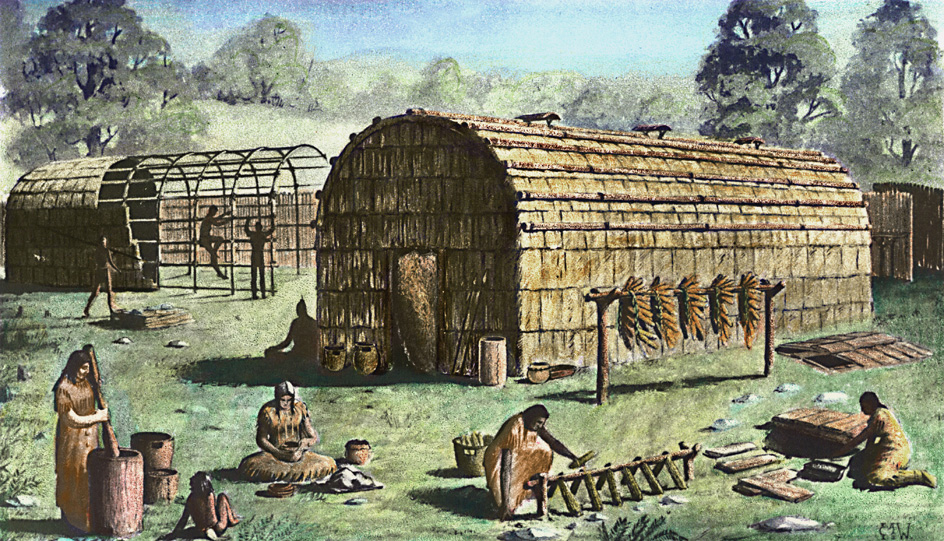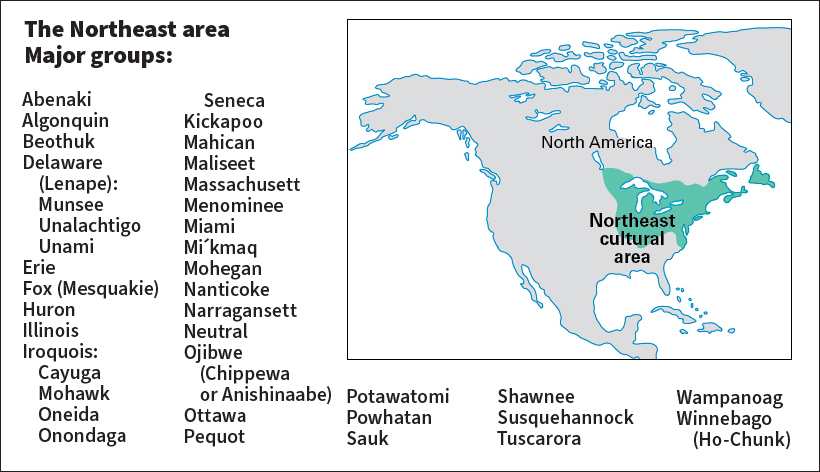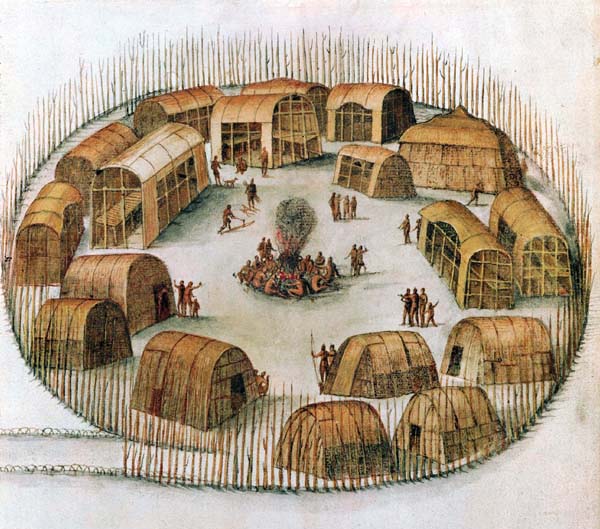Longhouse is a traditional communal (shared) dwelling among Indigenous Longhouses were common among the peoples of the northeastern region of North America. They were large, rectangular houses. Longhouses ranged from about 50 to 400 feet (15 to 120 meters) long and about 18 to 23 feet (5 to 7 meters) wide. A typical longhouse was 180 to 220 feet (54 to 67 meters) long. The size of the family who lived in the longhouse determined the length of the structure. 
The Iroquois were known for building longhouses. The Iroquois were a federation of Indigenous American groups that once occupied most of what is now New York state. From east to west, the tribes included the Mohawk, Oneida, Onondaga, Cayuga, and Seneca. In 1722, the Tuscarora joined the Iroquois league, and the federation became known as the Six Nations. The Iroquois called themselves the Haudenosaunee. This name refers to their dwellings and means we longhouse builders. The longhouse was also a symbol of the Great Law of the Iroquois, the federation’s oral constitution, in which the sky was considered the roof of the longhouse and the floor was Earth. 
Iroquois longhouses were traditionally built using saplings (young trees) with the bark removed. The wider ends of the saplings were set in holes in the ground, forming a rectangular shape. The thinner ends were then joined in the middle to form a roof. Thin strips of bark or rope were used to tie the saplings together. The frame was then covered with bark. An opening in the roof served as a chimney. Openings at either end of the longhouse covered with animal hides served as doors.
Iroquois villages included longhouses with separate sections for related families. Many Iroquois longhouses sheltered an elderly couple with separate “apartments” for each married daughter. The couple’s married sons lived in the longhouses of their wives’ families. Each new generation added a section onto the longhouse. The longhouse had a central aisle the entire length of the building. The central aisle typically held a fire used by all families within the clan.
Other Indigenous people of northeastern North America also built longhouses, including the Erie, Huron, and Mahican peoples. Some Indigenous people of the northwest coast also built longhouses. These longhouses were built using logs and split-log planks. In the northwest, longhouses were set up with one doorway facing the shore. 
